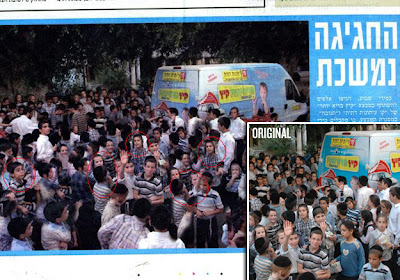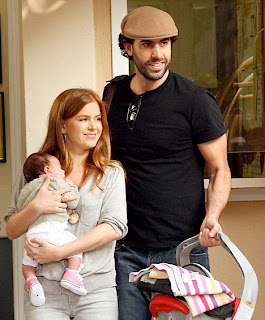Cross-posted to the “Jewish Techs” blog at The Jewish Week
That’s right, Esther’s in Vegas. No, not THAT Esther? We’ll shift our focus to Queen Esther in less than two weeks. For now, the focus is on another Esther.
Connected Jewish leaders know that Esther Kustanowitz, the writer and social media consultant, is in Las Vegas because her Twitter and Facebook feeds pinpoint her location there. She’s at Tribefest, the Jewish Federations of North America’s “meet up” on the Vegas Strip for young Jews to “connect, explore & celebrate the richness of Jewish music, food, arts & culture.” But don’t worry, you don’t have to actually be in Vegas to participate in TribeFest. In fact, you don’t have to ever leave the comfort of your own home anymore to get to Jewish conventions, conferences, retreats, or organized excuses to gamble, party and network in Sin City.

With the popularity of social networking, you can feel like you’re actually at the Jewish conference without having to book a flight, get a hotel room, and register for the “HELLO My Name Is” nametag in plastic on a lanyard. In fact, it’s not only the speakers and breakout sessions that can be followed on Twitter with a special hashtag (#), but also the pre-glows, private parties, networking lunches, and meetings over scotch at the hotel bar.
And if you were wondering if any participants had a difficult time traveling to the conference, you can follow that on Twitter too. EstherK (her Twitter handle) starred in a Twitter remake of “Planes, Trains & Automobiles” when she tried to get across the pond to Limmud late last year. She updated her 3,000-plus Twitter followers with every frustrating travel delay she endured. And when she actually got to #limmud at the University of Warick in the UK, she let us know who else was there, which sessions she was attending, and what she was doing later that night.
Twitter hashtags have kept the non-attendees feeling connected at just about every recent Jewish conference and convention, from the Reform Biennial to AIPAC and J-Street to the current JCPA Plenum. Last year’s General Assembly in New Orleans might have set the record for the most tweets at a Jewish conference with thousands of Twitterers left wondering what the #NOLAGA hashtag was all about and why it was trending.
In New Orleans at the GA, JFNA hired Kustanowitz to produce an innovation and social media enthusiasts’ event – NOLAISM (NOLA Innovation and Social Media) Schmooze-Up, where live tweeting happened simultaneously to the actual in-person schmoozing. She didn’t attend the 2009 GA in person, but wrote about attending the conference “virtually” thanks to Twitter in a blog post titled “The GA As Seen Through Twitter.”
William Daroff, Vice President for Public Policy and the Director of the Washington office of The Jewish Federations of North America, is the reigning Twitter king of the organized Jewish community. With his list of 6,000 followers and growing, Daroff has amassed his own network on Twitter. His travel and speaking schedule is public information because he not only shares it with the people of Cyberspace but also frequently posts photos via Twitpic of his whereabouts. It’s not unusual to read Daroff’s tweets that he posted while moderating a panel discussion in front of a thousand people. One need not be at the hotel bar with Daroff at a conference to be able to network with him over a cocktail — just read his tweets to be part of the conversation.
At the 2010 GA, Kustanowitz used the #NOLAGA Twitter feed to monitor sessions that conflicted with the ones she was attending and “to assess in real-time how the sessions I was in were resonating with the other Twitterers, and to eavesdrop on what people were talking about.” She added that the “amazing part was seeing that there was a host of Twitter users who viewed themselves as on-the-scene reporters, sending instant reports not just of the larger events (for instance, Prime Minister Netanyahu speaking) but of the crowd’s responses, the behavior of members of the Israeli press, any dissent or enthusiasm that they, as members of the audience, could see more effectively than those on the stage and at the podium.”
The Twitterers who are live and in-person at the actual event can even meet their “virtual” friends for the first time. Conference attendees will use Twitter updates to let other participants know where they are in the hotel or convention center for a real-life meet up.
I’m following much of the TribeFest action right now and will likely do the same when I sit out the Rabbinical Assembly convention (curiously also taking place in Vegas) later this month. While I’ll miss reconnecting with friends and colleagues in real-life, I can follow the convention on the monitor in the comfort of my office without having to get on a plane and say goodnight to my kids over a phone. If I want to ask one of the speakers a question, I can just tweet it and let a participant ask it live.
Twitter is certainly affecting the way we participate in conferences and I’m sure that attendance at large-scale conventions has decreased over the past year. So, rather than getting in on the early bird registration for that next convention, save the money and the hassle of travel and just find out what the hashtag will be. Sometimes it’s easier to be a follower than an attendee.
(c) Rabbi Jason Miller | http://blog.rabbijason.com | Twitter: @RabbiJason | facebook.com/rabbijasonmiller
















